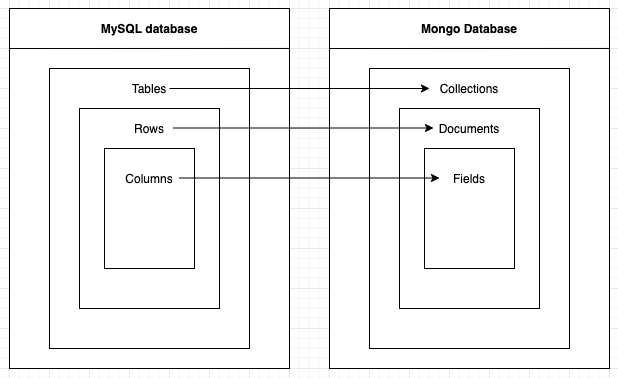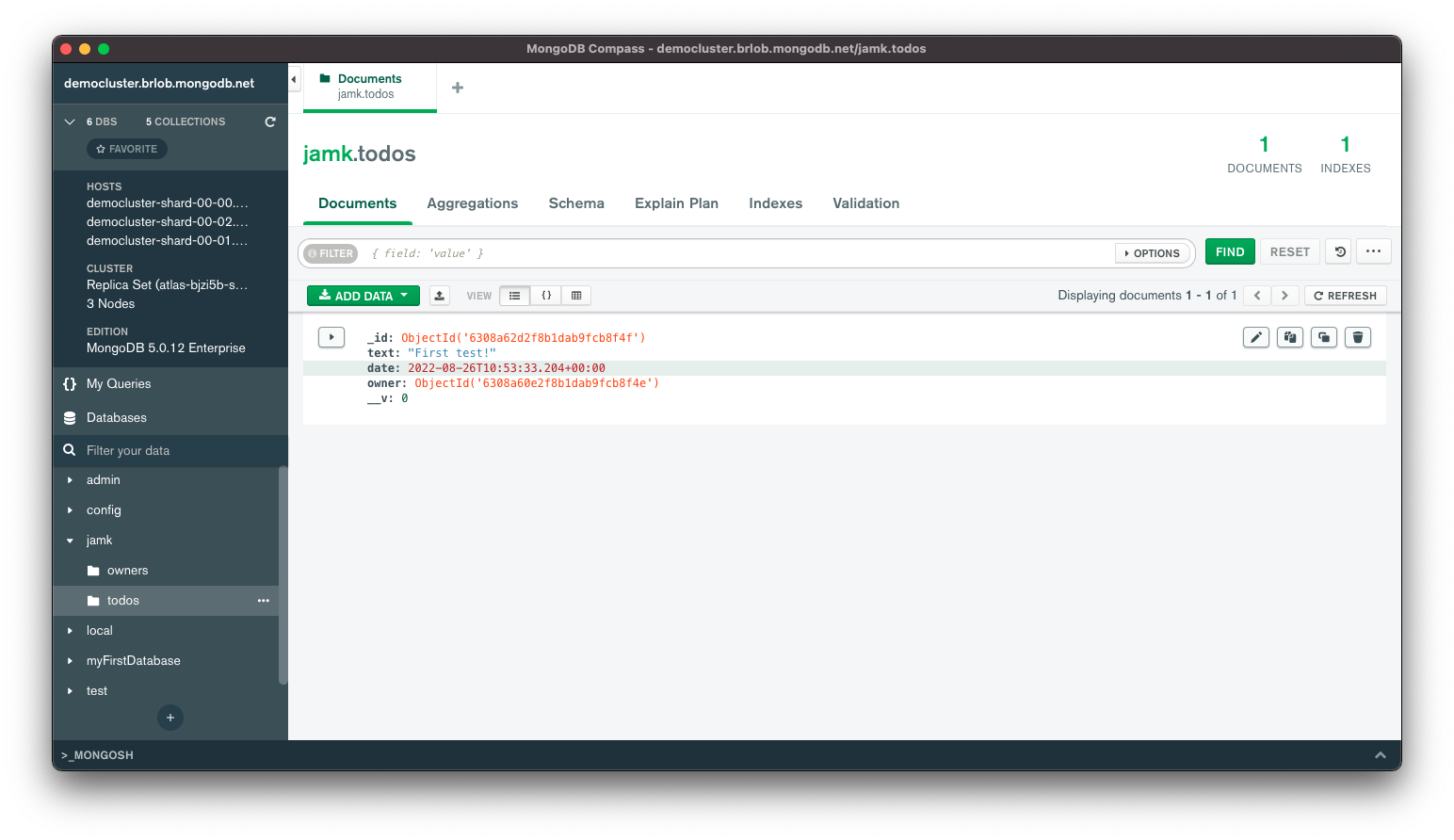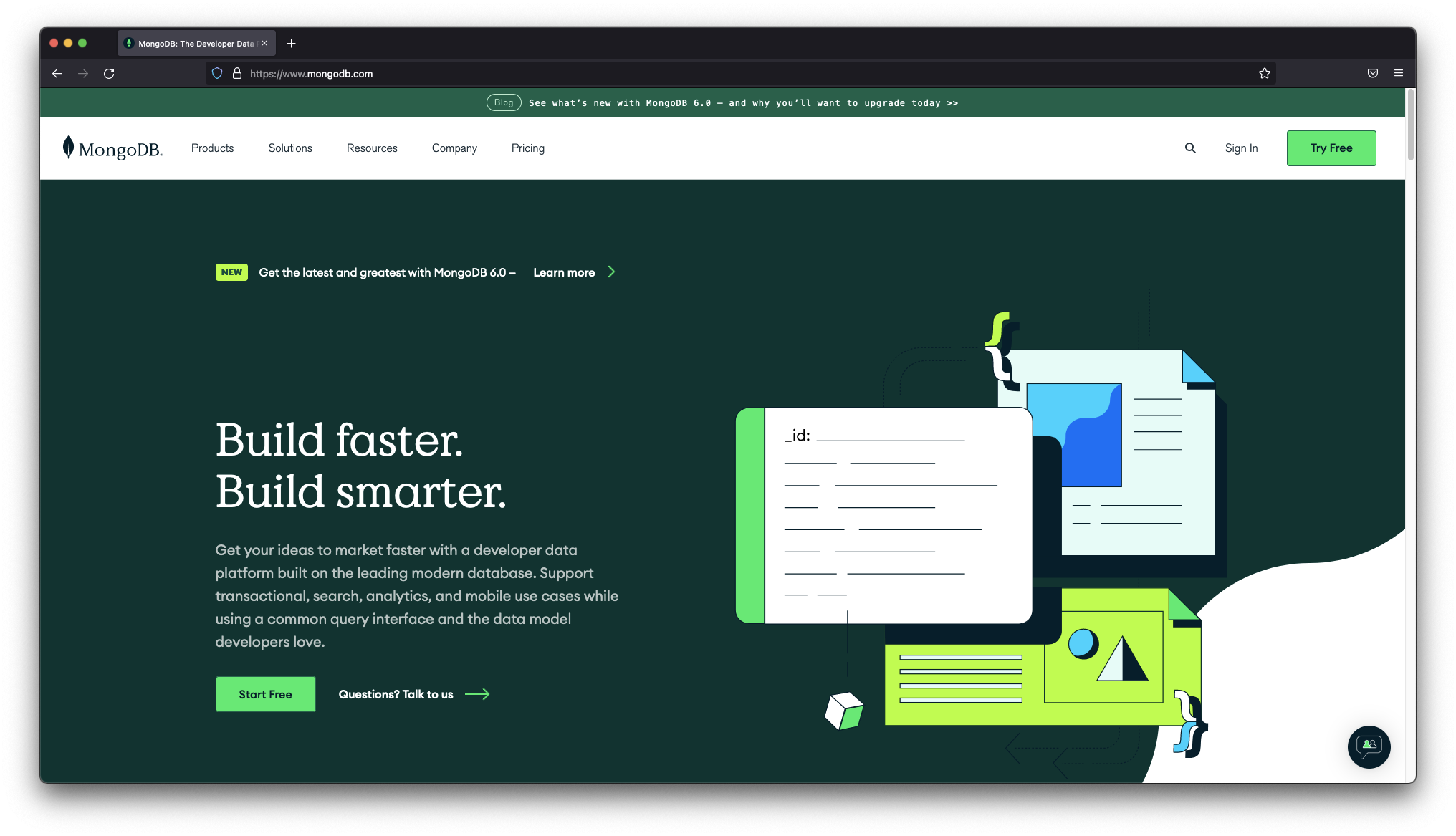Introduction
MongoDB
MongoDB is an open-source document database built on a horizontal scale-out architecture. Founded in 2007, MongoDB has a worldwide following in the developer community.
MongoDB is a document-oriented NoSQL database used for high volume data storage. MongoDB uses collections and documents, instead of tables and rows which are used in the traditional relation databases, like MySQL.
In MongoDB each database contains collections, which in turn contains documents. Each of these documents can contains different number of fields which contains key-value pairs, which are the basic unit of data in MongoDB.
MongoDB is a popular choice as a database with Node.js and Express, e.g. in MEAN and MERN stacks. Therefore, it is a natural database choice for this course. This material focuses on accessing MongoDB through the Mongo Shell command-line interface, as the goal is to write JavaScript programming code using Node.js and Express to manipulate the MongoDB database.
Mongo University
Mongo University offers free courses designed to equip you with the skills you need to succeed. Courses contains downloadable video lectures, Hands-on labs and quizzes and active discussion forums. With the completion of each course, you will receive a Proof of Completion to help advance your career.
Links
Mongo Basics
In this course you will learn how to set up your database and start exploring different ways to search, create, and analyze your data with MongoDB. We will cover database performance basics, and discover how to get started with creating applications and visualizing your data.
Using MongoDB with Node.js
Use search tool to find all courses with Node.js.
MongoDB Node.js Developer Path
This learning path contains a series of courses to teach you MongoDB skills. In this path, you’ll learn the basics of building modern applications with Node.JS, using MongoDB as your database.
MongoDB Compass
Compass is an interactive tool for querying, optimizing, and analyzing your MongoDB data. Get key insights, drag and drop to build pipelines, and more. Easily work with your data in Compass, the GUI built by — and for — MongoDB. Compass provides everything from schema analysis to index optimization to aggregation pipelines in a single, centralized interface.
Download it from here: MongoDB Compass.
Use MongoDB locally
You can install MongoDB locally to your computer or use MongoDB in the Cloud using Atlas. MongoDB supports a variety of 64-bit platforms. Refer to the Supported Platforms table to verify that MongoDB is supported on the platform to which you wish to install it.
MongoDB offers both an Enterprise and Community version of its powerful distributed document database. You should install Community version to your local computer, which is free to use.
MongoDB cloud
The version of the MongoDB cloud service can be found at: https://www.mongodb.com/, where you can register for free. This is one easy way to include the database provided by MongoDB in your own applications. You don't have to set up and maintain it yourself. Another significant advantage is that MongoDB is accessible from all your published applications. MongoDB on your own local machine on localhost is available only during application coding time.
Get Started with Atlas instructions can be found from here: Get Started with Atlas and Start with Guides. Basicly you will need to follow below steps to get your database to Mongo Cloud / Atlas UI:
- Create an Atlas account
- Create and deploy a free cluster (select free shared, for example AWS and Frankfurt)
- Add your connection IP address to your IP access list
- Create a database user for your cluster
- Connect to your cluster, for example with Mongo Compass, or Node app
Read More
- MongoDB
- MongoDB - Guides
- MongoDB - Install
- MongoDB - Install Community Edition
- MongoDB - Download installatation packages
- MongoDB - Compass GUI for MongoDB
- Why use MongoDB
- MongoDB vs MySQL Differences
Goals of this topic
Understand
- How to install and start using MongoDB
- How to use MongoDB Atlas
- Differences with traditional relation databases and document-oriented databases.


